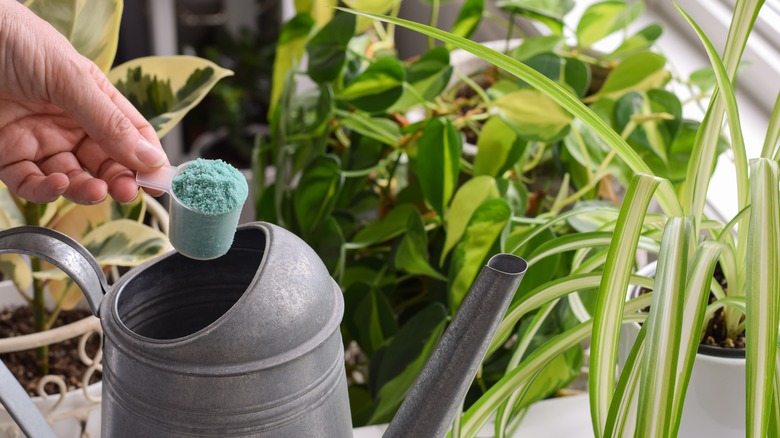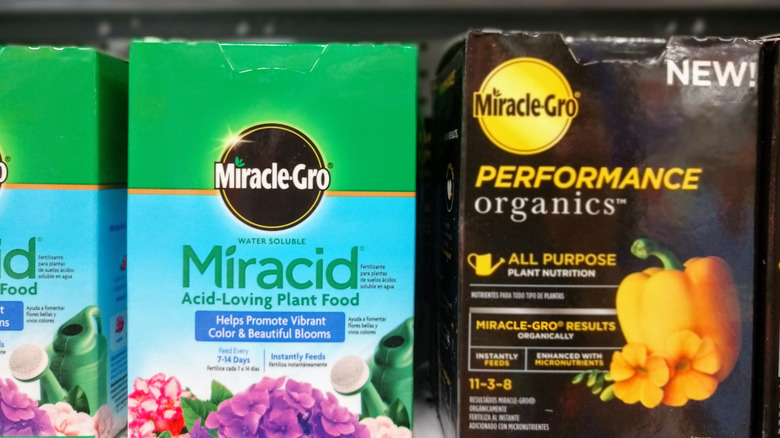Do Houseplants Really Need To Be Fertilized?
Growing houseplants is a fun and rewarding hobby for many. It's not as much fun when the plants mysteriously fade and die. What is happening? If you are watering the proper amount and they are receiving the correct amount of light, it could be due to a lack of fertilization. It is a common indoor gardening mistake that many people make when they fail to realize that houseplants also need fertilizer. All plants receive carbon dioxide, oxygen, and hydrogen from the air and water. Outdoor plants take up nutrients from the soil. Since houseplants live in a finite amount of soil, the soil eventually becomes depleted of these nutrients and requires fertilizer to be added. It isn't just plants that have outgrown their pots that require fertilizer. It's important for any plant to remain healthy. Houseplants that need fertilizer show signs of slow growth, pale or dropping leaves, and weak floppy stems. If they are a flowering variety, they may never flower at all.
The goal of fertilizing your houseplants is to add enough nutrients to stimulate new growth to compensate for the natural loss of leaves and keep the roots and stems healthy. You may find that some plant stores offer low-maintenance plants that you don't have to fertilize, but even those would benefit from a light fertilization schedule. It is possible to overfertilize, and more is not better with fertilizers. Follow the label instructions, which often have different concentrations depending on how frequently you plan to fertilize.
How and when to fertilize your houseplants
Fertilizers are available in various forms, including liquid, tablet, spike, and slow-release or granular, which can be sprinkled on the soil's surface. Any of these work, but using a liquid fertilizer diluted in water makes fertilizing houseplants simple. The three numbers on the fertilizer label refer to the amount of nitrogen, phosphorus, and potassium (known as NPK) in the fertilizer: nitrogen for leaf growth, phosphorus for flowering and root growth, and potassium for stem strength and stress. Many people have a variety of houseplants, so choosing an all-purpose fertilizer with all three numbers the same or close to the same is a safe choice. Before adding fertilizer, water plants thoroughly. This prevents the fertilizer from burning the roots, and plants that are watered will uptake the nutrients more efficiently. If the soil is dry, the nutrients remain locked in and cannot be absorbed by plants.
How often you should fertilize your houseplants depends on what type you have, but a once-a-month schedule during spring and summer is generally a safe approach. Fertilizing at the wrong time of the year can actually harm your plants. In the winter months, the reduced length of daylight and cooler temperatures slow or stop growth, and plants do not utilize the fertilizer, which can lead to a buildup of salts in the soil. Excessive salt is indicated by a white buildup on the pot or in the soil. If there is an excess of salt showing, the plant should be flushed with water to remove excess or even repotted in fresh potting soil.

